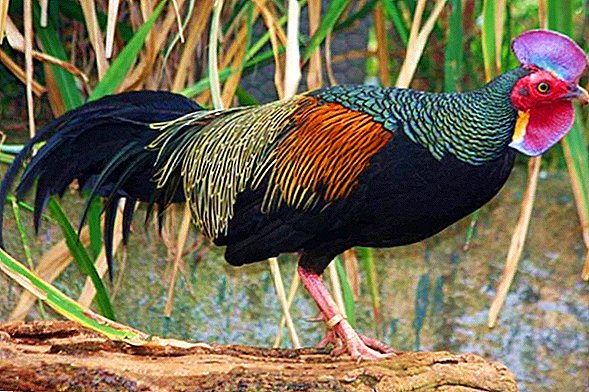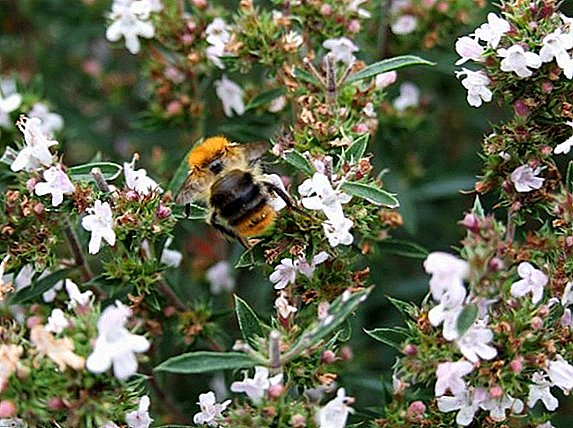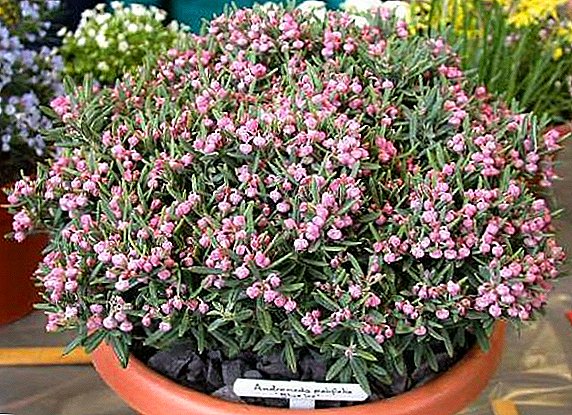 We often perceive the chicken as exclusively poultry, whose meat and eggs are always on our table. However, before the chickens and roosters began to live in comfortable conditions in the henhouse, they lived in the wild, moving freely and taking care of their own food. The wild representatives of this species of bird live on our planet and now they are the founders of the hens that are familiar to us.
We often perceive the chicken as exclusively poultry, whose meat and eggs are always on our table. However, before the chickens and roosters began to live in comfortable conditions in the henhouse, they lived in the wild, moving freely and taking care of their own food. The wild representatives of this species of bird live on our planet and now they are the founders of the hens that are familiar to us.
Origin
The first mention of wild chickens are found in the countries of the East and South, in tropical regions. They are very similar to pheasants, but represent a separate species of birds, close to the type of pheasants.
Wild chickens are the ancestors of all the known in the world breeds of chickens, which currently number about 700. They were domesticated and crossed, receiving new species and hybrids. In pure form, representatives are found only in hot countries in the natural environment, in nurseries and reserves.
We recommend to get acquainted with the best breeds of meat, egg, meat-egg, as well as decorative, fighting chickens.
It is known that the jungle, or, as they are also called, the Banking hens, were domesticated for another 6 thousand years BC. er in the southeastern region of Asia, and about 3 thousand years BC. er they became poultry already in India.  Charles Darwin argued that it was from these birds that all the now known breeds of domestic hens originated, because with some of them there is a striking similarity.
Charles Darwin argued that it was from these birds that all the now known breeds of domestic hens originated, because with some of them there is a striking similarity.
Wild roosters and hens are very interesting to collectors and breeders. However, this type of bird is difficult to maintain at home. This work requires a lot of work, knowledge and skills.
Important! When breeding wild chickens in captivity, they must be provided with a spacious enclosure occupying a large area and height. If this is not possible, the birds need to cut the wing feathers on the wings.
Types of wild chickens
At the moment there are only four species of wild chickens in the natural environment:
- jungle jungle - Gallus gallus (from lat.), Red Junglefowl (from eng.);

- gray jungle - Gallus sonneratii (from Latin), Gray Junglefowl (from English);

- Ceylon jungle - Gallus lafayettei (from Lat.), Ceylon Junglefowl (from English);

- green jungle or shrub - Gallus varius (from lat.), Green Junglefowl (from eng.).

The most well-known and widespread species is the Banking comb chickens. Domesticated comb birds live on all continents and are of great economic importance to humans, but their domestication requires great efforts.
All 4 species of these birds have a lot in common. In the daytime they are on the ground in search of food, and at night they are taken to rest on the trees. They have well developed wings and legs, they fly and run well.
It will be interesting to read about why chickens go bald and fall on their feet, as well as what are the most common diseases of the eyes and feet in chickens.
In case of danger, the bird can run away and hide in the bushes, or take off and hide in the tree crown. For all these reasons, chickens prefer to live in forest or shrub areas, bamboo thickets, and rarely settle on the plains.  The female pulls out a shallow hole in which she incubates and stores eggs. Whole clutch contains 5-9 eggs. Wild birds are not very good chicks and breed once a year. Chickens grow quickly, have a protective color.
The female pulls out a shallow hole in which she incubates and stores eggs. Whole clutch contains 5-9 eggs. Wild birds are not very good chicks and breed once a year. Chickens grow quickly, have a protective color.
The voice of wild birds is the same as that of domestic birds, only louder. They are afraid of predatory animals and birds. Life expectancy can reach 3-5 years.
Important! At the beginning of the nesting season, the rooster determines its territory, in which only he and 3-5 hens can be in this period.A special feature of wild roosters is the presence of spurs on their paws, which serve as weapons for the struggle between males during the mating season. They use them on close contact, injuring the opponent.
Banking
The most popular variety, because it is the ancestor of the majority of domesticated species of chickens. Banking is also called the red jungle chickens, due to the peculiarities of appearance. The male has a reddish-golden plumage on the back and a black-brown - on the belly.  The head, neck, neck and upper part of the tail are colored golden yellow. The rooster has a massive red comb and a brown beak. Females are less attractive in appearance in order to be able to go unnoticed in the wild and to sit their offspring.
The head, neck, neck and upper part of the tail are colored golden yellow. The rooster has a massive red comb and a brown beak. Females are less attractive in appearance in order to be able to go unnoticed in the wild and to sit their offspring.
The hens have a short tail, its color is mostly brown, the feathers on the neck are black with yellow edges. The birds are small in size: the males reach a maximum of 1200 g, and the chickens, only 600-700 g.
Read more about what to do if chickens do not carry and peck eggs badly, what to do with obesity in laying hens, why chickens peck a rooster and each other to the blood, does a rooster need eggs to carry eggs when young hens begin to flee.
They have well-developed muscles, and their physique can even be called "sports". Banking is very hardy and can fly well. Red jungle feeds on what they find in their natural habitat: seeds, fruits, grains, invertebrates and even certain species of vertebrate organisms.  The hens are very restless, they rarely remain in place, only in the case of hatching of offspring. They create nests on the ground, and in case of danger, they wander over long distances.
The hens are very restless, they rarely remain in place, only in the case of hatching of offspring. They create nests on the ground, and in case of danger, they wander over long distances.
Did you know? The image of banker hens was minted on ancient coins. At different times, the appearance of these birds can be found on the money of 16 states of the world.
Ceylon
This type of wild chickens is found on about. Sri Lanka, where he became a national symbol. In this region, the population of this variety of chickens is monitored at the state level and they make efforts to preserve it. Ceylon cocks are not more than 73 cm tall, an average of 68 cm, and chicken only 35 cm.  Bird torso elongated, muscular. Males have a rich decoration, which is painted in orange-red color in the head area and is replaced by dark purple, turning into black closer to the tail. The comb of the Ceylon rooster is red with a large yellow spot.
Bird torso elongated, muscular. Males have a rich decoration, which is painted in orange-red color in the head area and is replaced by dark purple, turning into black closer to the tail. The comb of the Ceylon rooster is red with a large yellow spot.
Birds live on the ground and eat fallen fruits, seeds and seeds of plants. Can also eat various insects. Wild Ceylon chickens, sensing danger, begin to emit unusual sounds, warning their relatives about the danger, and run away to a safer place.
Such breeds of domestic hens as the sultan, appenzeller, milfleur, gudan, minorca, araucana, kohinquin, and paduan are distinguished by their beautiful appearance.
Gray
Gray wild chickens can be found on the territory of Indonesia. Their plumage is painted gray, so they got their name. Each chicken feather has a beautiful pattern. Roosters of this species have a gray-gold color.  Birds reach a maximum of 1000 g, an average of 700-900 g. They are muscular, their body is oval-shaped with legs-kegs. The crowing of the wild rooster is especially distinguished from its domesticated relative. His cry consists of a large number of syllables.
Birds reach a maximum of 1000 g, an average of 700-900 g. They are muscular, their body is oval-shaped with legs-kegs. The crowing of the wild rooster is especially distinguished from its domesticated relative. His cry consists of a large number of syllables.
Did you know? "Speaking" chickens can make more than 50 sound combinations. They do not just cluck like their domesticated relatives, but transmit information, which scientists still work on deciphering.
Chickens live in small families, prefer to organize nests on the edge of mixed forests, in bushes, on the outskirts of plantations. 
Greens
Representatives of this type of chickens are very similar to pheasants, with which, according to scientists, they have similar genes. Birds live on about. Java and Sunda Islands. You can often find the name of this breed as a green jungle rooster, not a chicken.
The main body of the bird has a dark color with a greenish tint, red feathers cover the outer part of the wing. Bird catkins have a bright tricolor color. Rooster crest purple.
Green jungle can fly well. Their flight can take quite a long time. The average size of a bird is 75 cm, the weight of individuals, on average, is 800-1000 g.  Chickens prefer to live in the bush and go in search of food twice a day, morning and evening. Males can move along the coast, located in the thickets of valleys and rice fields.
Chickens prefer to live in the bush and go in search of food twice a day, morning and evening. Males can move along the coast, located in the thickets of valleys and rice fields.
Wild chickens live in real natural conditions, and, therefore, are very dependent on climate change and the state of the environment. In recent years, the population of wild birds has declined significantly, but the ancestors of domestic chickens still continue to freely live in their natural habitat.
















